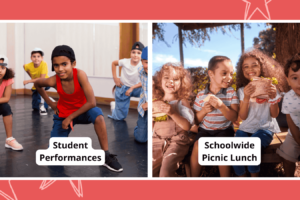
On AI, We Reap What We Sow (opinion)
I teach a first-year seminar. We call the course Education and the Good Life. The goal of the class is to engage students in a 15-week conversation. We talk about how they can make the most of their courses and our campus, with an eye toward the question of how the college experience can create an approach toward the world that lasts their whole life. In that spirit, last fall, I gave students an example of how I spend my time.
In class, I shared a set of drafts of a poem that appeared in my most recent collection. One by one, I projected versions of the poem onto a screen. I drew attention to the red ink slashing through unwanted words. I pointed out how I added, struck, added, struck and then re-added a comma. I boasted about my careful use of my favorite punctuation mark—the delightfully overlong em dash. In the end, I shared all 32 drafts of the poem, from conception to published work. When I stopped, a student in the front row quipped, “That doesn’t seem efficient.” In response, I quoted Annie Dillard—“How we spend our days is, of course, how we spend our lives”—and I talked about the concept of “craft.” I suggested that a committed craftsperson produces work, but that in important ways, and for the reason Dillard suggests, the work also produces them. In the end, the time we spend on our projects makes us who we are.
I asked the class to think about the time they give to writing assignments. I encouraged them to think about the minutes and the hours that they carve out of their schedules to read and then to write. I told them, “These are investments, not just in the creation of something to turn in on a deadline, but rather, investments in your humanity.” I explained, “When you give yourself time to use your faculties, you end up changing the dimensions of your mind.” I said, “You’re changing yourself.” Then I mused about how a college graduate is a certain kind of person, and how the process of earning a degree is largely a process of becoming.
My students are smart. They understand social conventions. They know how to act, so they humored me. They nodded their heads, even though I detected facial expressions formed with a noticeable twist of “maybe that is how it worked in your generation.” Without saying the words, they made a point. History matters.
In addition to my work on campus, I serve as a member of the Higher Learning Commission’s peer-review corps. Once or twice a year for the past 22 years, I have studied and visited colleges for the sake of ensuring the quality of their operations. When I joined the corps, in the early 2000s, the HLC held a leadership role in the nationwide assessment movement. The assessment of what students submit as their work, and by proxy what they know and what they can do, had become the benchmark by which we judge our institutions and accredit them. Because the question of whom students become during an education is harder to answer, and because the methods to answer such questions are out of necessity qualitative, we left those concerns aside while we moved, as a country, toward documenting the easily measurable, but narrowly defined, cognitive outcomes of the college experience.
In the early 2000s, the heightened focus on the assessment of learning outcomes dovetailed with what were then advances in technology. Web-based platforms, still described as “learning management systems,” made it possible to assess students’ abilities at a distance, anytime, anywhere and under nearly any circumstance. The new, single-minded focus on the cognitive outcomes of higher education burgeoned alongside efforts to legitimize the new online institutions that had removed time in place as a component of schooling. In effect, our message was that we take stock of our success by measuring the end product of education, as opposed to the process of becoming educated. Students are smart. They quietly noted our priorities.
Enter AI. Today we live in an era in which students can feed a prompt into an automated prose generator and, in seconds, have a viable draft of a writing assignment. What are they supposed to think? We’ve spent three decades acting like outcomes assessments are the only things we value. As for questions about how or where or with whom people engage in the process of becoming educated, our general approach has been, “These are not things that we like to know about.”
Consider our focus on outcomes in another sphere of human development: athletics. Assume for a moment that you are a cyclist. I am confident that technocrats will soon create a bot capable of riding a bicycle. On a day when life presents you with too much to do, and you can’t find time to ride, would it seem reasonable to send a bot out in your stead? I hope that sounds absurd. During most of the time that we give to athletics, the outcome is not the point. In cycling, on most days, the point is not that a bicycle was ridden. The point is that you rode a bicycle.
The craft of writing and the art of performing music share a set of similarities. Both demand engagement, practice and the exercise of creativity. The difference is that writing practices, outside of occasional public readings, tend to unfold in solitude, whereas a musical performance is, by nature, a social event. Imagine yourself as a student of the violin. At the end of the semester, during your final recital, would it seem reasonable to bring in a Bluetooth speaker, cue up a music streaming service to a song that you’ve been practicing and hit the play button? Of course not. The point is not that a song was played in the recital hall. The point is that you played the song.
In the era of AI, student disengagement looms like a fog on our campuses, from libraries to studios and laboratories. Our best data on undergraduate engagement suggests that members of Generation Z are reading less. When pressed with assignments that require deep thought, time on task and earnestness, students tend to see technology as a means to maximize efficiency. Should we blame them? We spent years building systems and assessments designed to sidestep questions about the nature of the process students move through on the way to earning degrees.
Through our actions, preferences and even accreditation, we built a set of values that suggest the finish line is what matters. We tend to see the route that we take to arrive there as irrelevant. Every campus I have ever visited staffs an office dedicated to the measurement of cognitive learning outcomes. I have yet to find a similar office aimed at understanding the quality, character or broad-ranging impact of the processes that students engage in during the course of an education.
I would say it’s past time that we started to give the process of becoming educated our attention. But in at least some quarters, we have long-standing and holistic studies of the college experience. In 1991, Ernest T. Pascarella and Patrick T. Terenzini wrote the first of what became a three-volume set, published at roughly 10-year intervals: How College Affects Students. Alongside a chapter on verbal, quantitative and subject matter competence, each edition of the book contains sections on psycho-social change, attitudes and values, and moral development. We should see the AI era as providing us with a reason, and an opportunity, to expand our interests to include an analysis of the broadly formative processes involved in education, as opposed to focusing solely on narrow sets of outcomes. Fortunately, if we find the will to turn our curiosity toward questions about the quality of the time that we ask students to invest in their education, or the kinds of people that college graduates become, there is a well-developed body of literature waiting to guide our efforts.
My first-year seminar includes an end-of-the-semester Saturday retreat. A local museum hosts the event. We take a tour in the morning, then students give presentations throughout the afternoon. The day represents more than just another class meeting. It’s a celebration. We make it a potluck, and the table we use features an impressive array of dishes: snacks, desserts, salads and crocks full of chili and soup.
This past year, at the end of the day, I stood at the table with three students as we were preparing to leave. I happened to point out that half of the contributions brought to the potluck were handmade. The others were store-bought. The handmade dishes were nearly gone, while the efficiently prepared, mass-produced cookies and salads still sat in their plastic containers.
One of the students said, “Hmm.” Then she added, “It’s not just ingredients on a table.” She went on, “How is something made? Who makes it? What kind of time do they spend?” She said, “That stuff matters.”
I smiled and told her I agreed.
Source link



